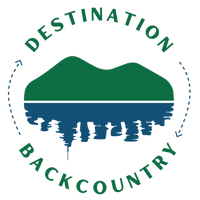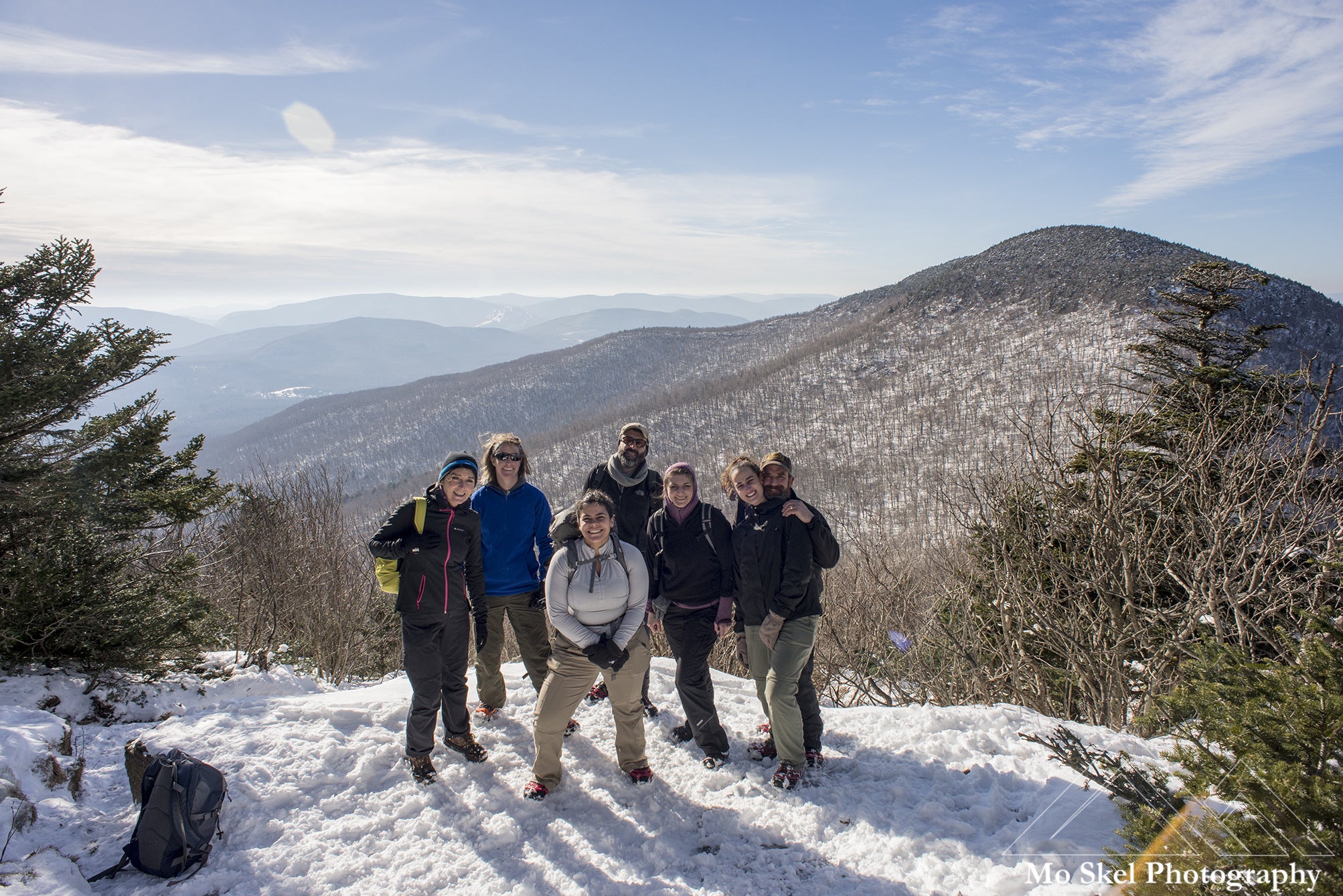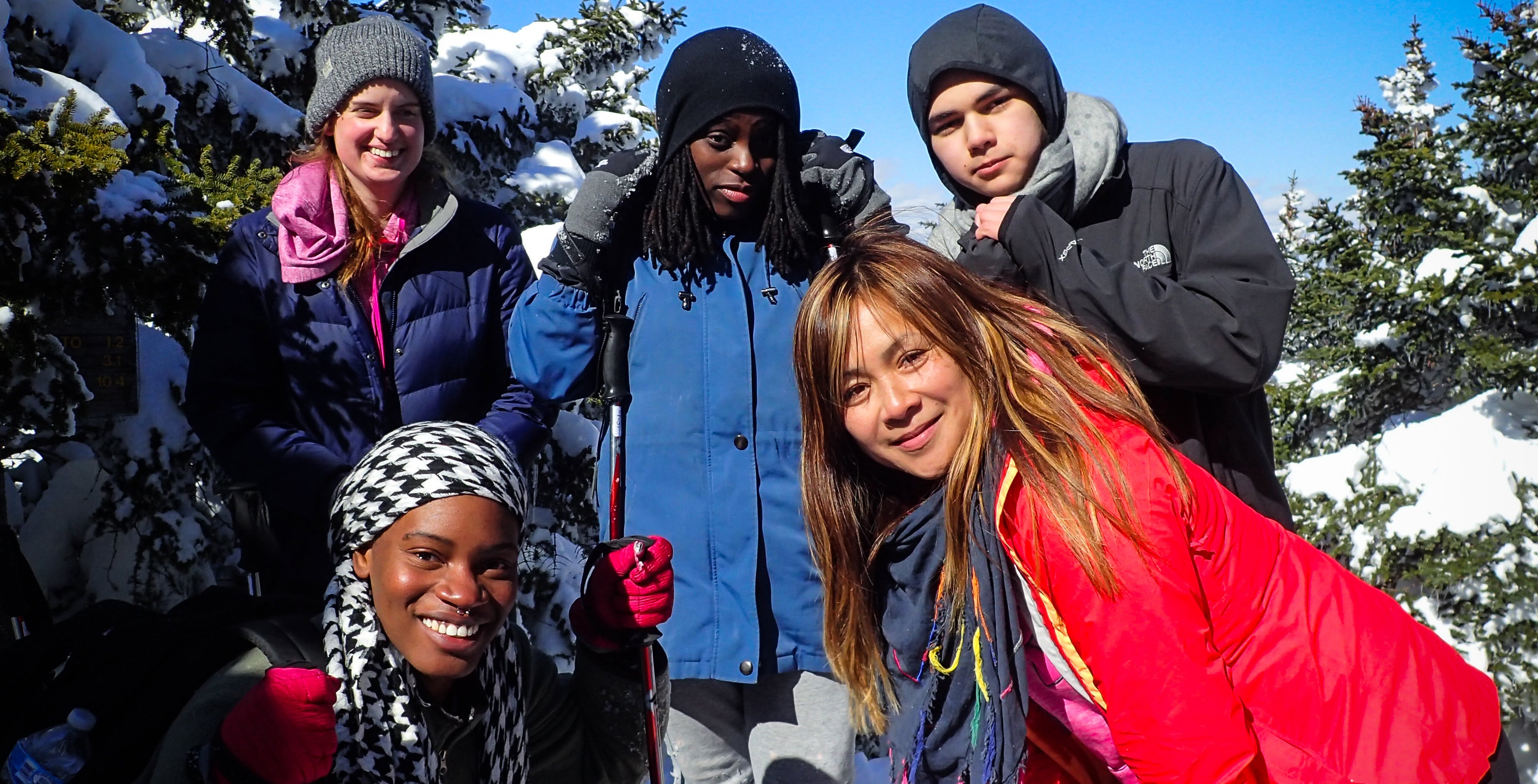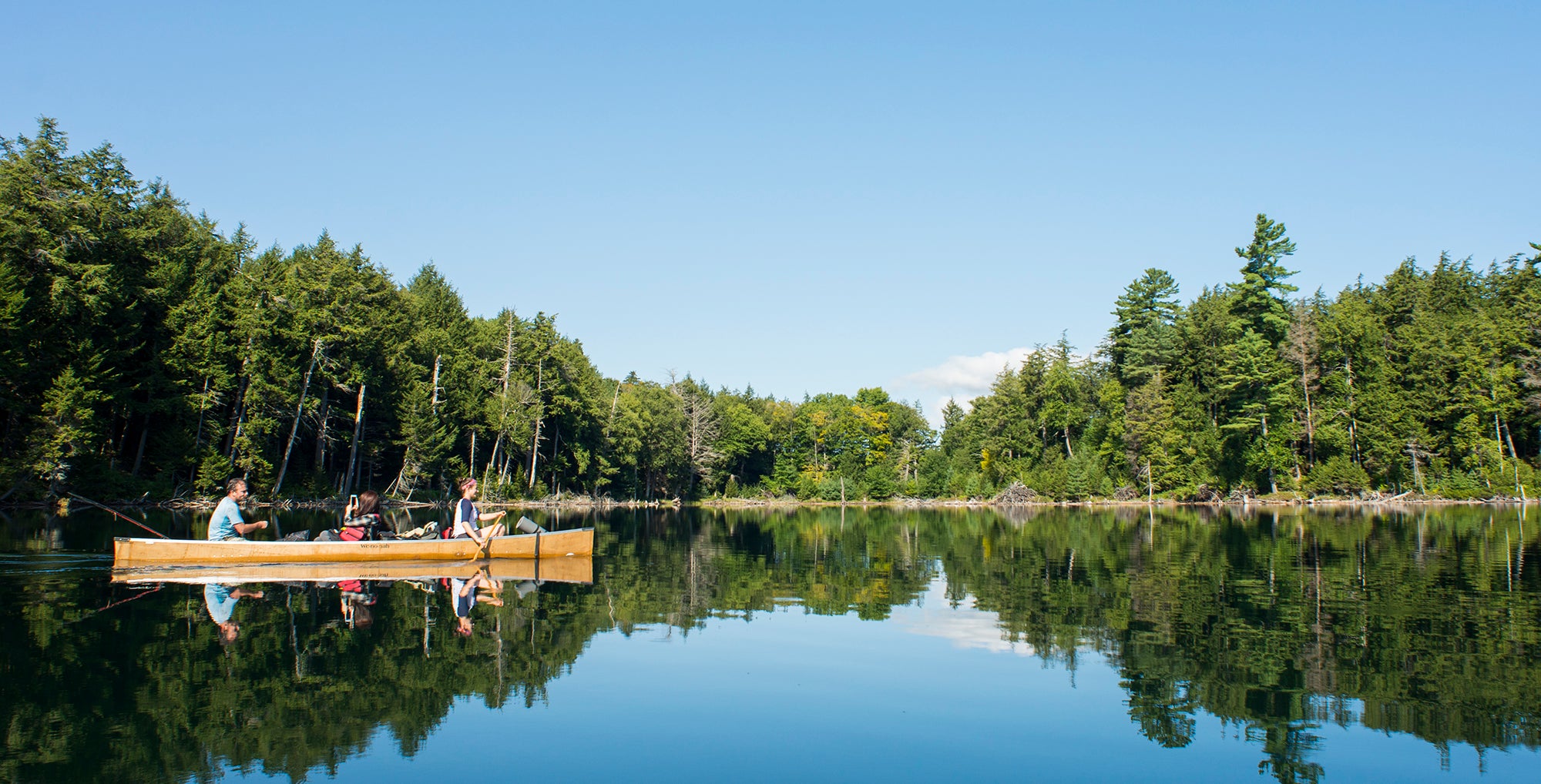An Introduction to Bushwhacking AKA Hiking Off-Trail
·
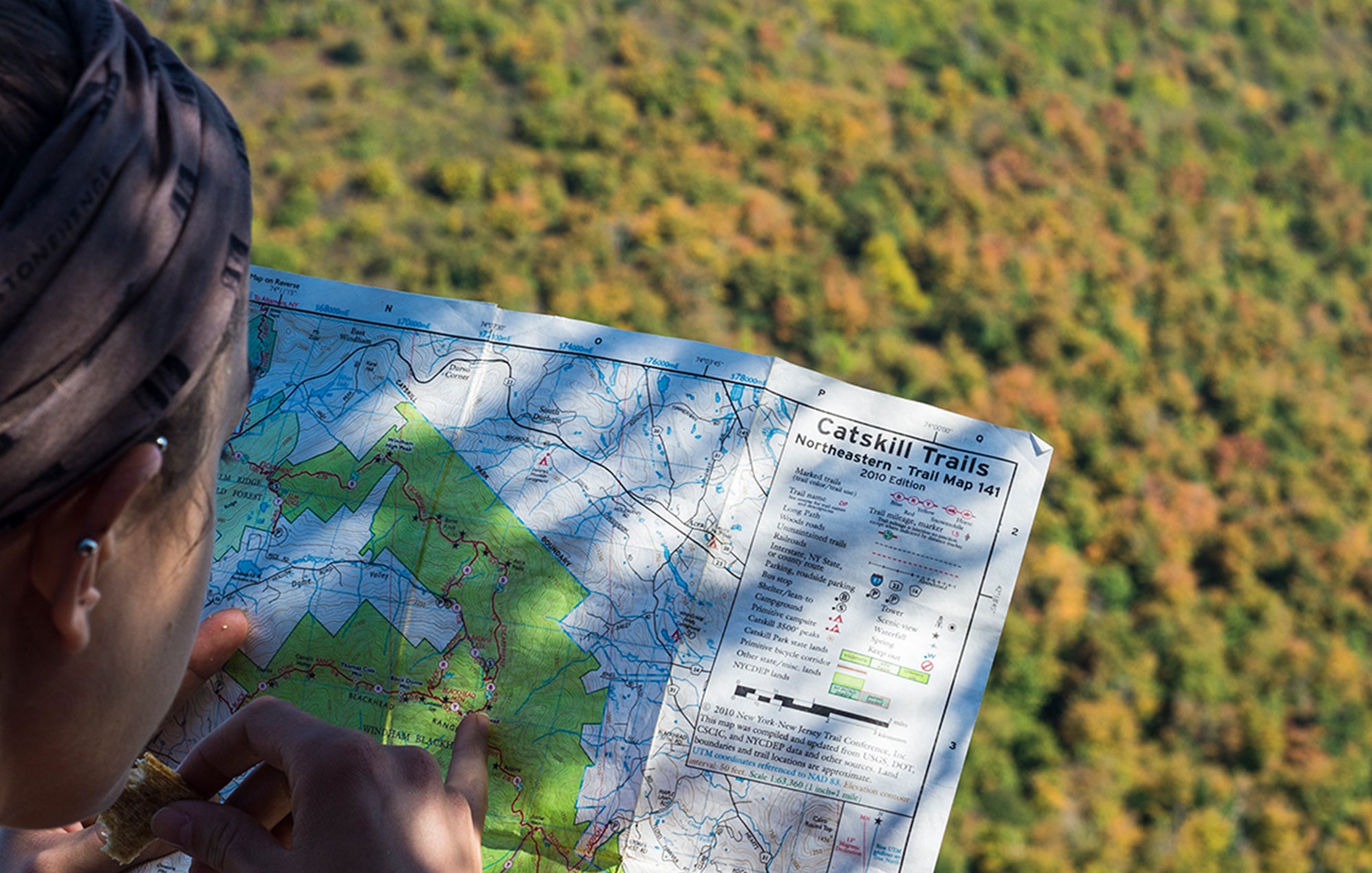
·
For many newcomers to the hiking world, the term “bushwhacking” produces images of machete-wielding hikers cutting their way through dense forest. In reality, bushwhacking is really just another way to say “hiking off-trail,” no machetes necessary (or allowed!).
The idea of hiking off-trail with no clear path to follow can sound intimidating at first, but for our guides and many experienced hikers, bushwhacking quickly becomes a favorite way to adventure. Here are some of the reasons we offer so many off-trail adventures and why we feel our hikers will love them too.
In terms of walking through the forest, bushwacking takes a little bit of practice, but in the same way that getting your “hiking legs” can take a few hours or a few hikes, you’ll find that bushwhacking comes naturally with time. In fact, one thing we love about bushwhacking is that everyone is truly able to hike their own way. For example, when we’re traversing a set of challenging cliffs, we find that everyone in our group might find a different way to scramble up based on what works best for them, their body type, their comfort level, etc. This type of hiking leads to a deeper connection with nature and a more meaningful hiking experience (see more on this below).
In general, you will find that you hike slower when bushwhacking as you face obstacles found more frequently off-trail—a patch of dense forest, finding your footing on uneven ground, navigating around and over downed trees, etc. The benefit is that many people find bushwhacking to be less of a cardio challenge than hiking on-trail. Bushwhacking also counteracts the “tunnel vision” that can occur on-trail, in which you become so focused on reaching the summit that you stop seeing the forest or enjoying and being outdoors.
If you’re planning to bushwhack on your own, we highly recommend mastering map and compass before you embark and to use digital tools with discretion, for a few reasons:
All of our guides are highly competent with a map and compass and experienced off-trail hikers, so joining a guided trip is a great way to get a taste of bushwhacking without the pressure of navigation.
Where do we begin! Once you’ve started hiking off-trail, it can become addicting. Here are some of the things we love most about bushwhacking.
What is bushwhacking?
Most hikers stick to on-trail hiking, which involves following an easy-to-see path (in theory at least) that should have trail markers and appear on maps. When hiking off-trail, you must find your own path through the forest, follow a map and compass instead of a trail, and determine elevation based on a topographic map.The idea of hiking off-trail with no clear path to follow can sound intimidating at first, but for our guides and many experienced hikers, bushwhacking quickly becomes a favorite way to adventure. Here are some of the reasons we offer so many off-trail adventures and why we feel our hikers will love them too.
How challenging is off-trail hiking?
Just like an on-trail hike, an off-trail hike can be as easy or as challenging as you’d like. In the Catskills we are fortunate to be able to plan an entire day or multi-day bushwhacking trip to multiple peaks, but you could just as easily choose a flat, easy-to-access bushwhacking destination a quarter mile or less off-trail.In terms of walking through the forest, bushwacking takes a little bit of practice, but in the same way that getting your “hiking legs” can take a few hours or a few hikes, you’ll find that bushwhacking comes naturally with time. In fact, one thing we love about bushwhacking is that everyone is truly able to hike their own way. For example, when we’re traversing a set of challenging cliffs, we find that everyone in our group might find a different way to scramble up based on what works best for them, their body type, their comfort level, etc. This type of hiking leads to a deeper connection with nature and a more meaningful hiking experience (see more on this below).
In general, you will find that you hike slower when bushwhacking as you face obstacles found more frequently off-trail—a patch of dense forest, finding your footing on uneven ground, navigating around and over downed trees, etc. The benefit is that many people find bushwhacking to be less of a cardio challenge than hiking on-trail. Bushwhacking also counteracts the “tunnel vision” that can occur on-trail, in which you become so focused on reaching the summit that you stop seeing the forest or enjoying and being outdoors.
Do you have to navigate with a map and compass?
Today’s hiker has incredible tools at their fingertips for navigation—GPS, smart phones, and more. As guides, our preference is to always navigate primarily with a compass and highly localized topographic map, and to use an app like Avenza as a backup.If you’re planning to bushwhack on your own, we highly recommend mastering map and compass before you embark and to use digital tools with discretion, for a few reasons:
- Cell phones and GPS die. You don’t want to find yourself in the middle of the wilderness with a dead cell phone and no idea where you are. (Pro tip: also always bring a headlamp with you and don’t rely on your cell phone’s flashlight for the same reason!).
- Be careful which apps you use for digital navigation. Crowd-sourced apps like Alltrails can be unreliable. We recommend a digital version of a map. In the Catskills, Avenza is the best choice.
- Map and compass tend to be much more precise than digital navigation. We print out highly localized maps so we know exactly what changes in elevation to expect. On a digital map, what appears to be a flat area can actually have significant elevation change that a more specific physical map will show. These kinds of unexpected barriers can make a hike much longer and more challenging.
All of our guides are highly competent with a map and compass and experienced off-trail hikers, so joining a guided trip is a great way to get a taste of bushwhacking without the pressure of navigation.
What are the benefits of off-trail hiking?
Where do we begin! Once you’ve started hiking off-trail, it can become addicting. Here are some of the things we love most about bushwhacking.
- Avoid the crowds. As the Catskills continue to grow more popular and the trails become more crowded, hiking off-trail is always a way to find solitude and peace in the forest, no matter how crowded a nearby trail might be. This is especially true for off-trail destinations that don’t lead to a 3500’ peak.
- Undiscovered destinations and hidden gems. The Catskills Park encompasses 700,000 acres across multiple mountain ranges. Of all the waterfalls, scrambles, flowers and flora, creeks and streams, berry patches, and swimming holes that can be found on trails, dozens more exist in the vast untrailed wild forests and wilderness areas. Plus, no trails lead to some of the most exquisite old growth forests in the Catskills, areas completely untouched by industry and man.
- A more intimate nature experience. As we alluded to above, with no trail, there is no one way to hike off-trail. In fact, when we travel to the same destinations dozens of times over the years, we rarely take the same exact route each time. Having to pick your way through hobble brush, navigate around a stand of spruce, or scramble up a wall of boulders means that you are attentive to each step you take and the way you move through the forest, which in turn leads to seeing the wilderness in an entirely different way. You’ll be amazed by how many more wildflowers and wildlife you spot while bushwhacking compared to on-trail hiking.
- A more social and collaborative experience. In addition to being more aware of the forest floor, bushwhacking makes you more aware of your surroundings and the makeup of the forest. With a little experience, you’ll naturally start seeing the best way to navigate difficult terrain, notice small changes in elevation, and more. Plus, instead of walking in a line where you can only talk to one person, being fanned out to bushwhack and talk through the best route to take, share observations, and more makes off-trail hiking a group experience.
Final tips for off-trail hiking
- Start small. Choose an easy-to-navigate to destination and build up to bigger bushwhacks.
- Leave No Trace. When hiking off-trail, you’re much more likely to crush delicate plants with your boots, disturb wildlife, etc. Be careful and mindful where you step and stick to hard surfaces when possible. When hiking as a group, fan out so that not everyone cuts the same path through the forest and creates a bigger impact.
- Give it a try! People tend to be nervous about their first time hiking off-trail, but with the security of a guide leading the way and offering tips on how to move through the forest, you will fall in love with bushwhacking.
